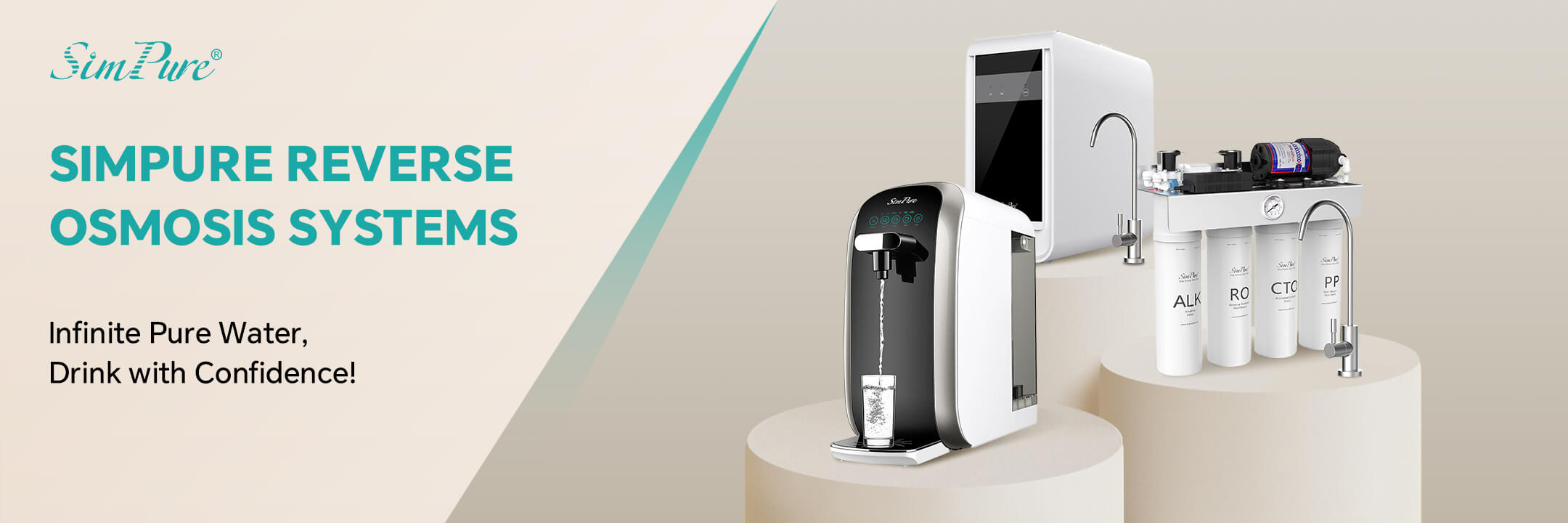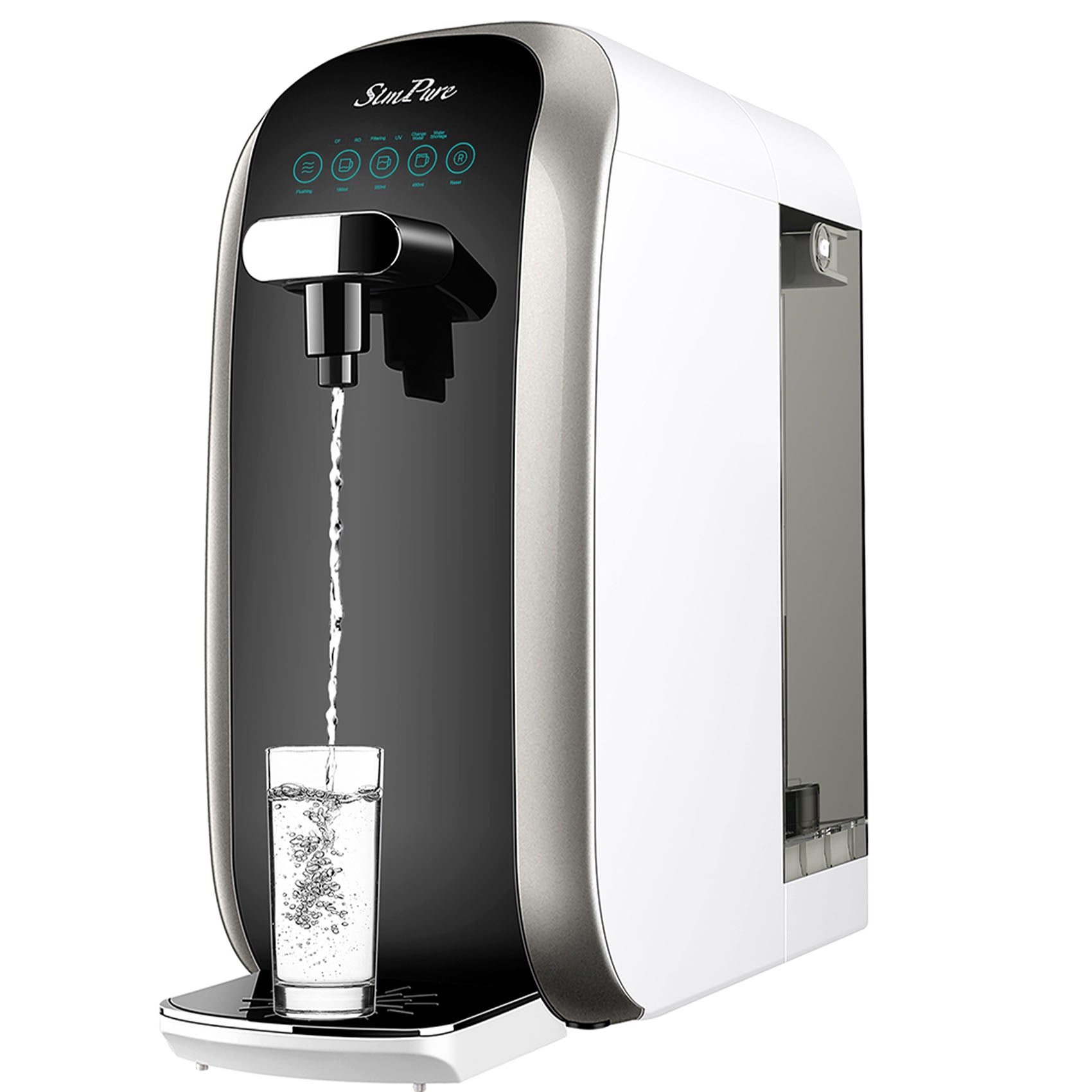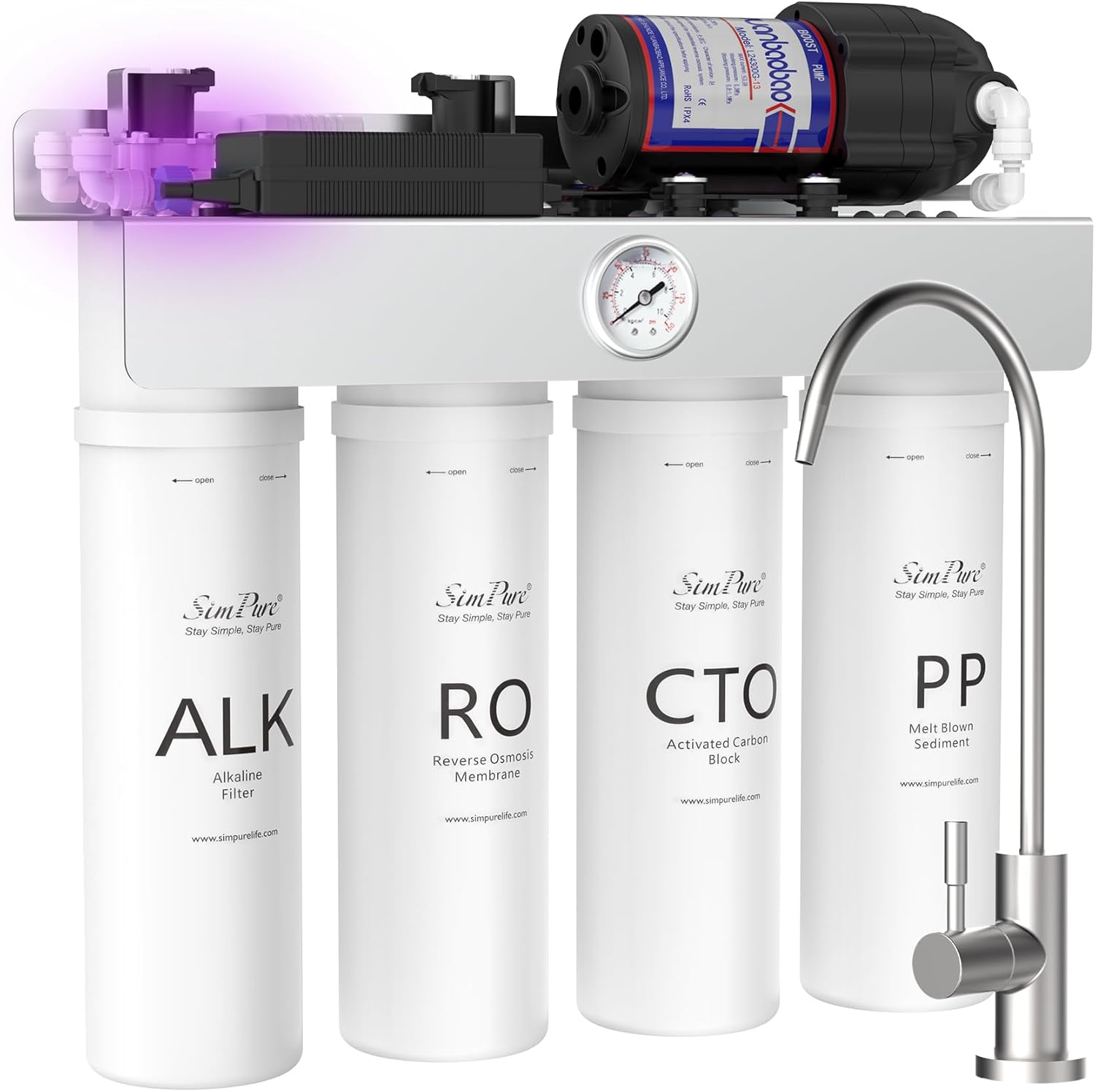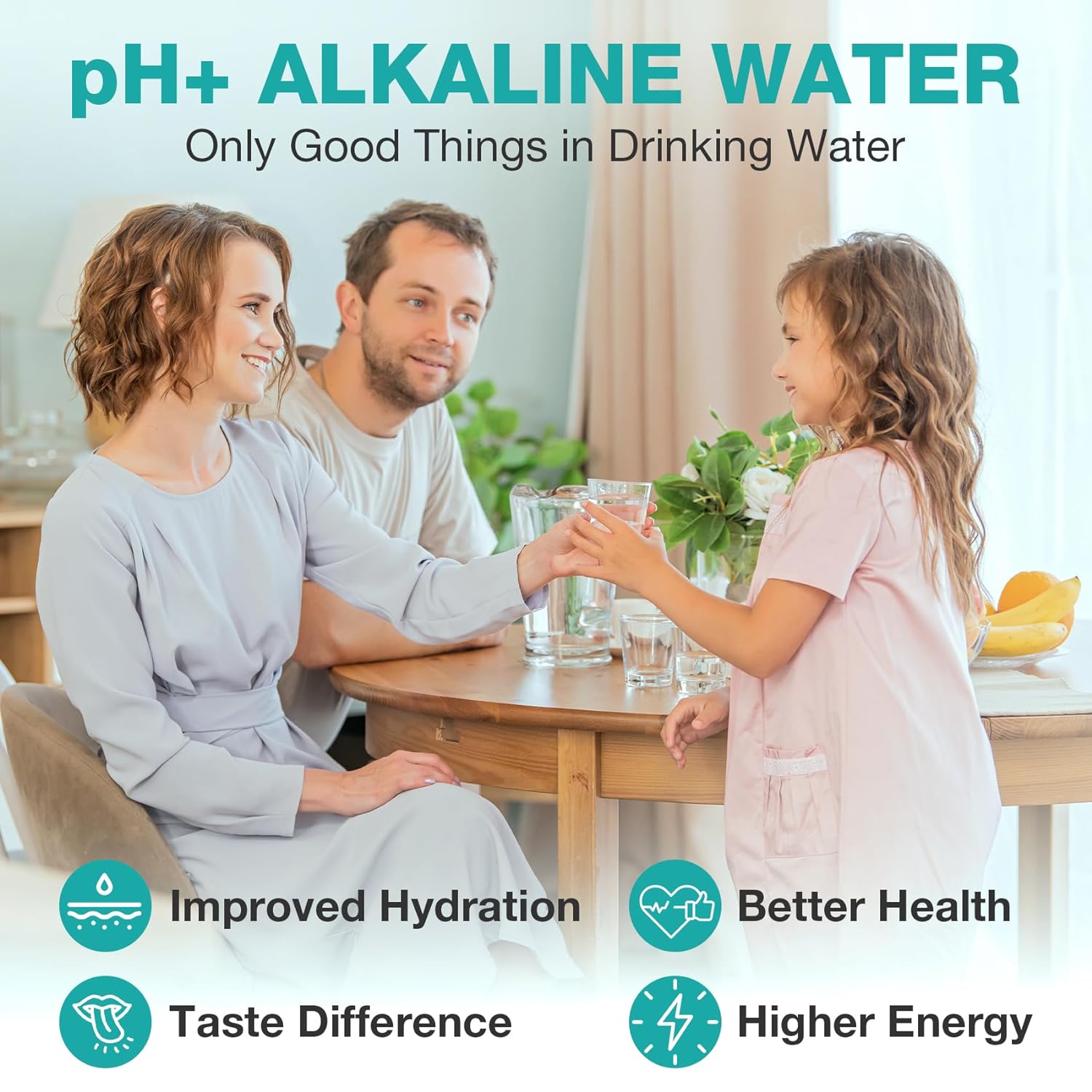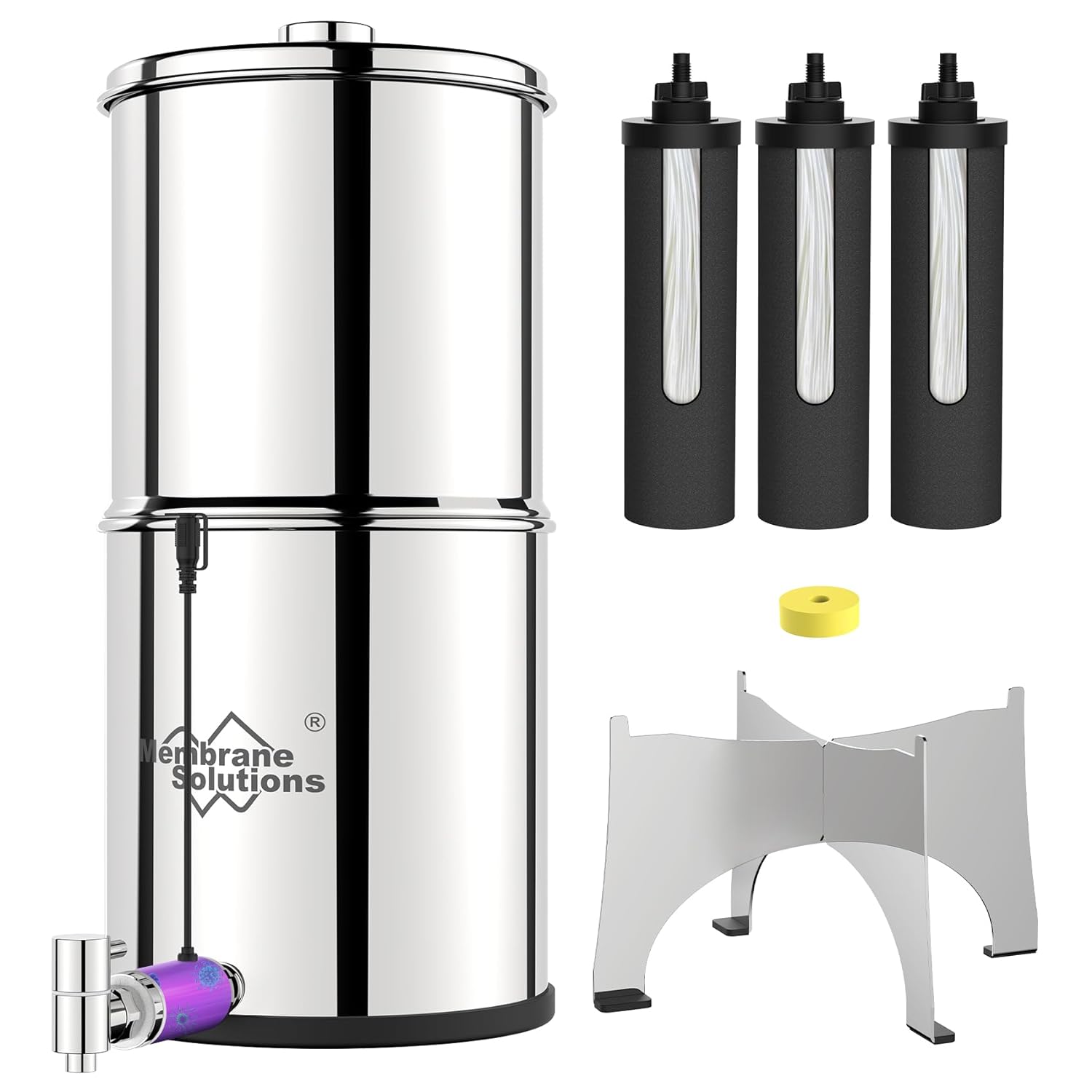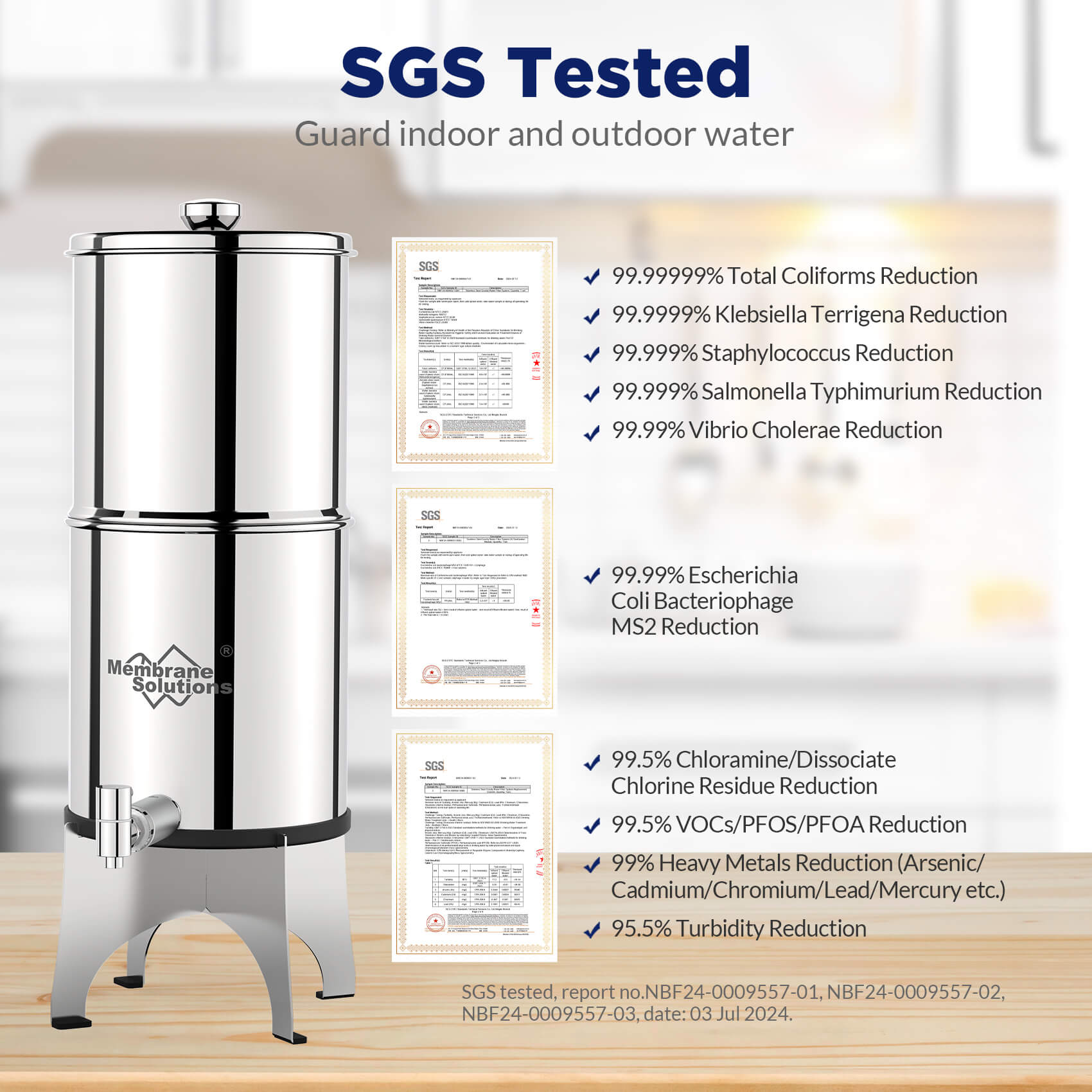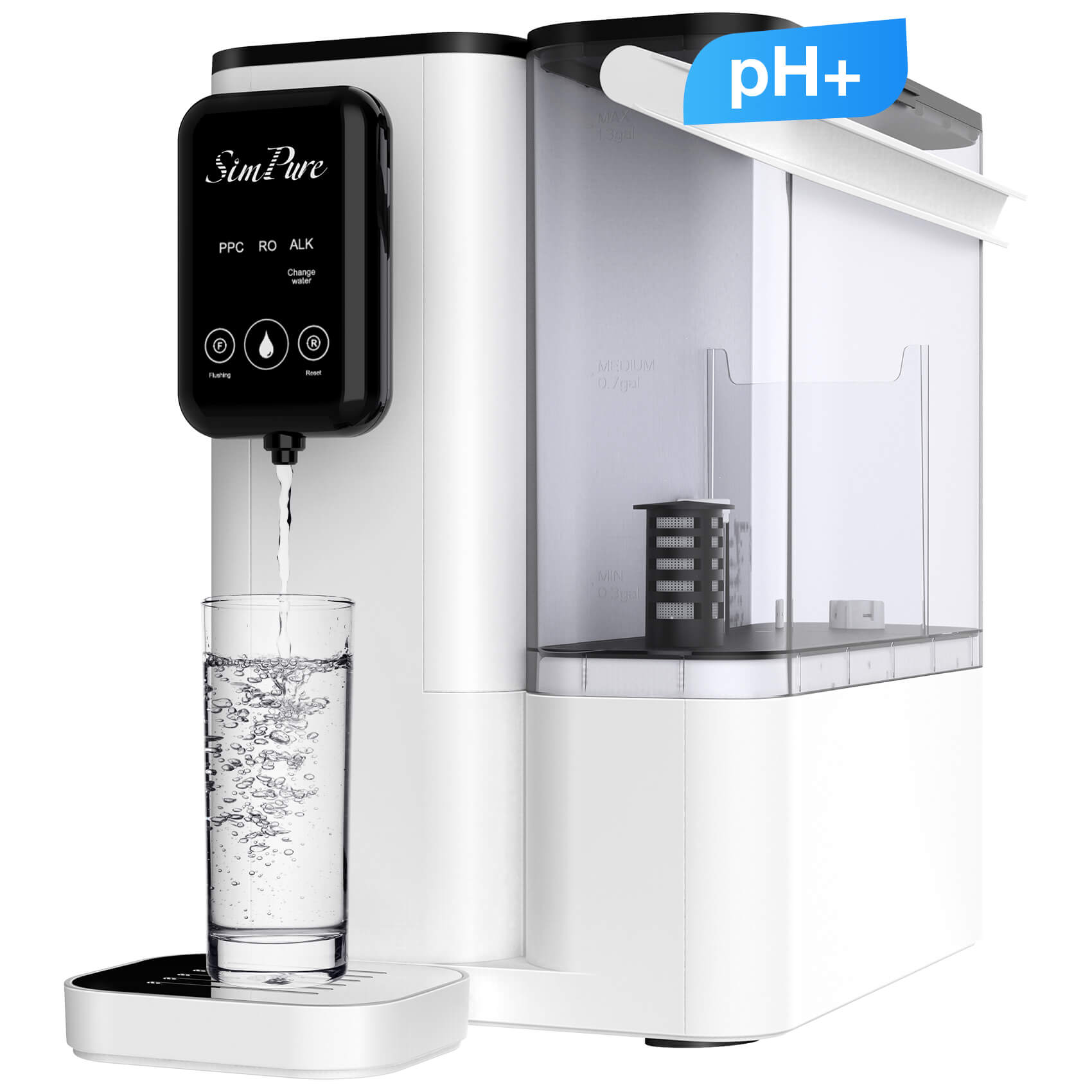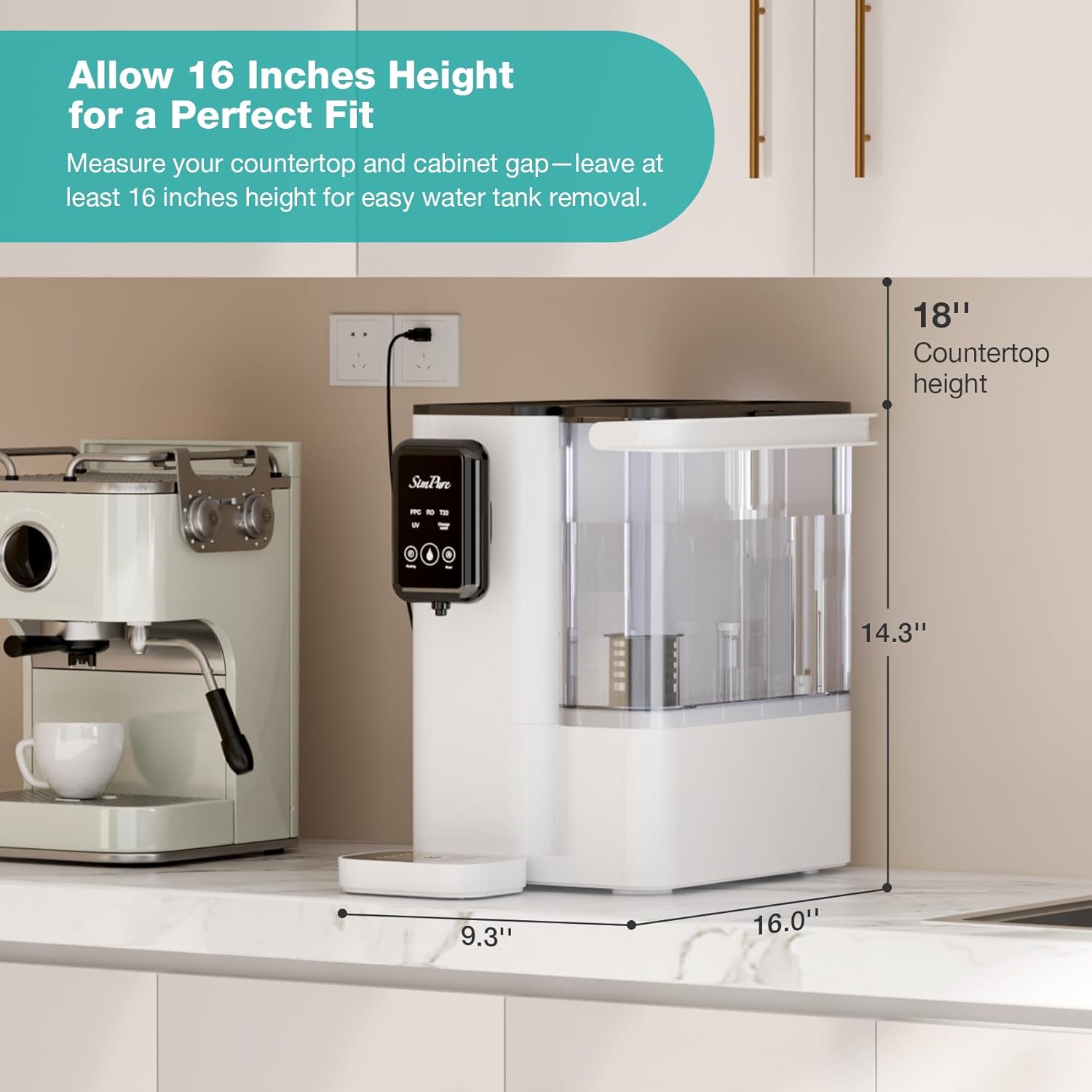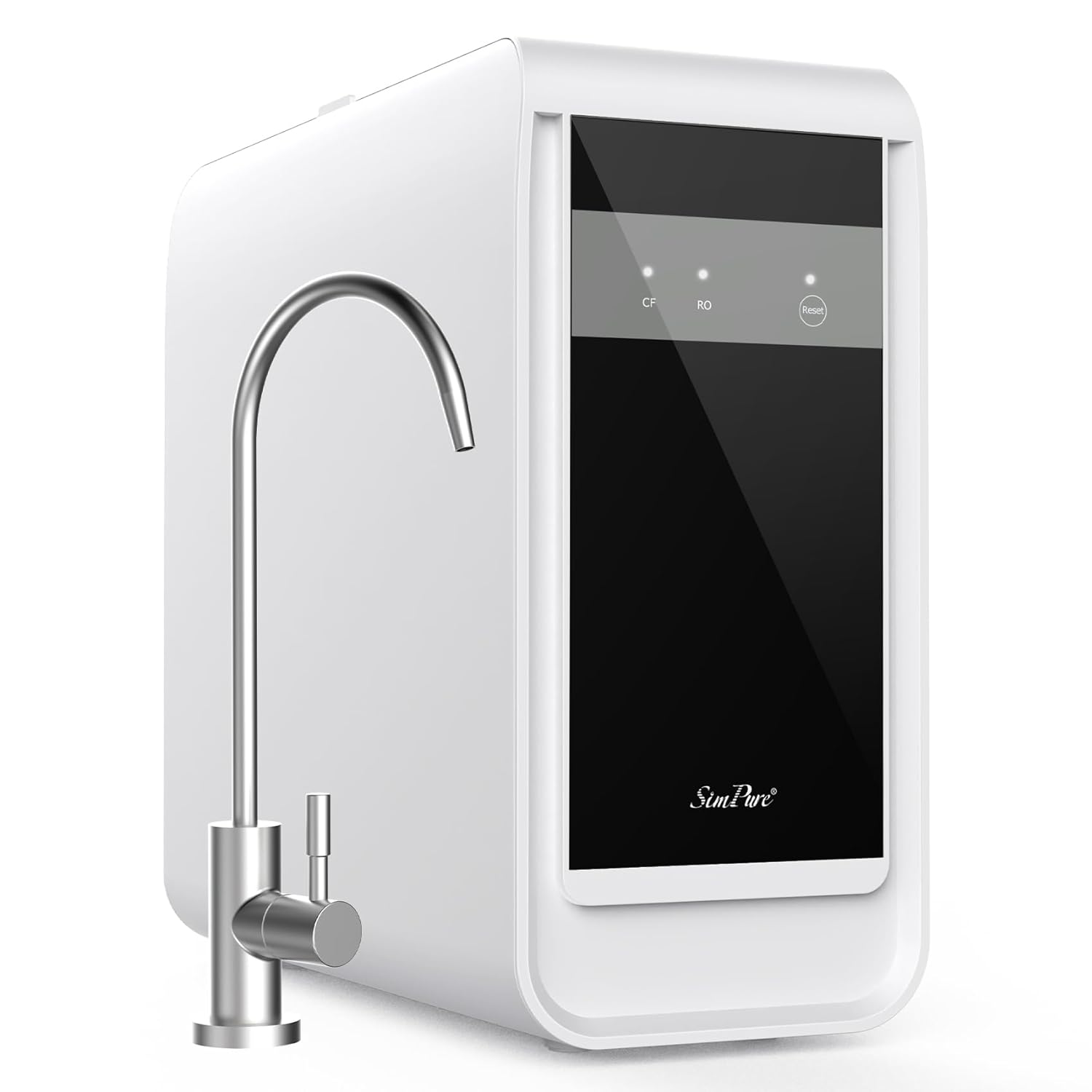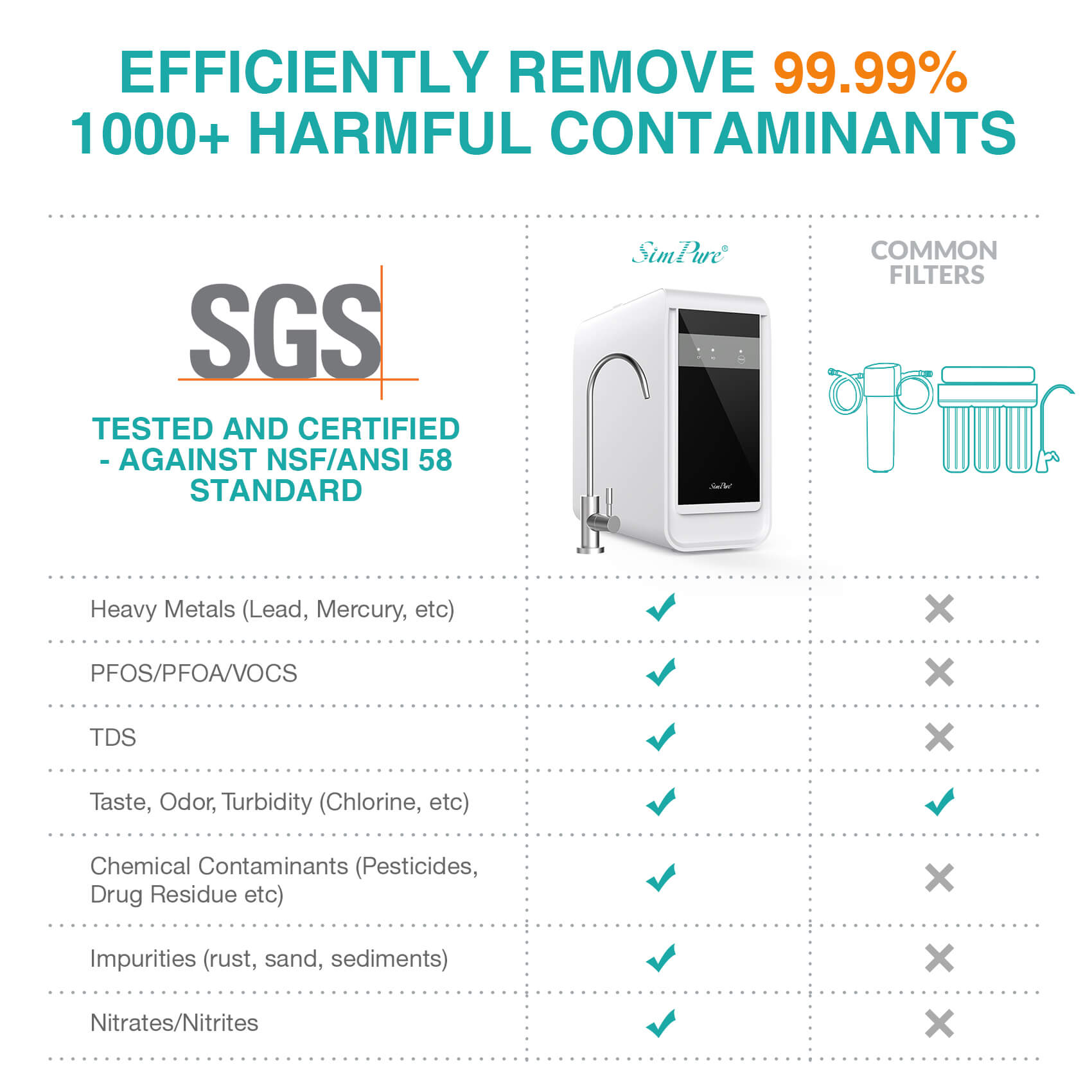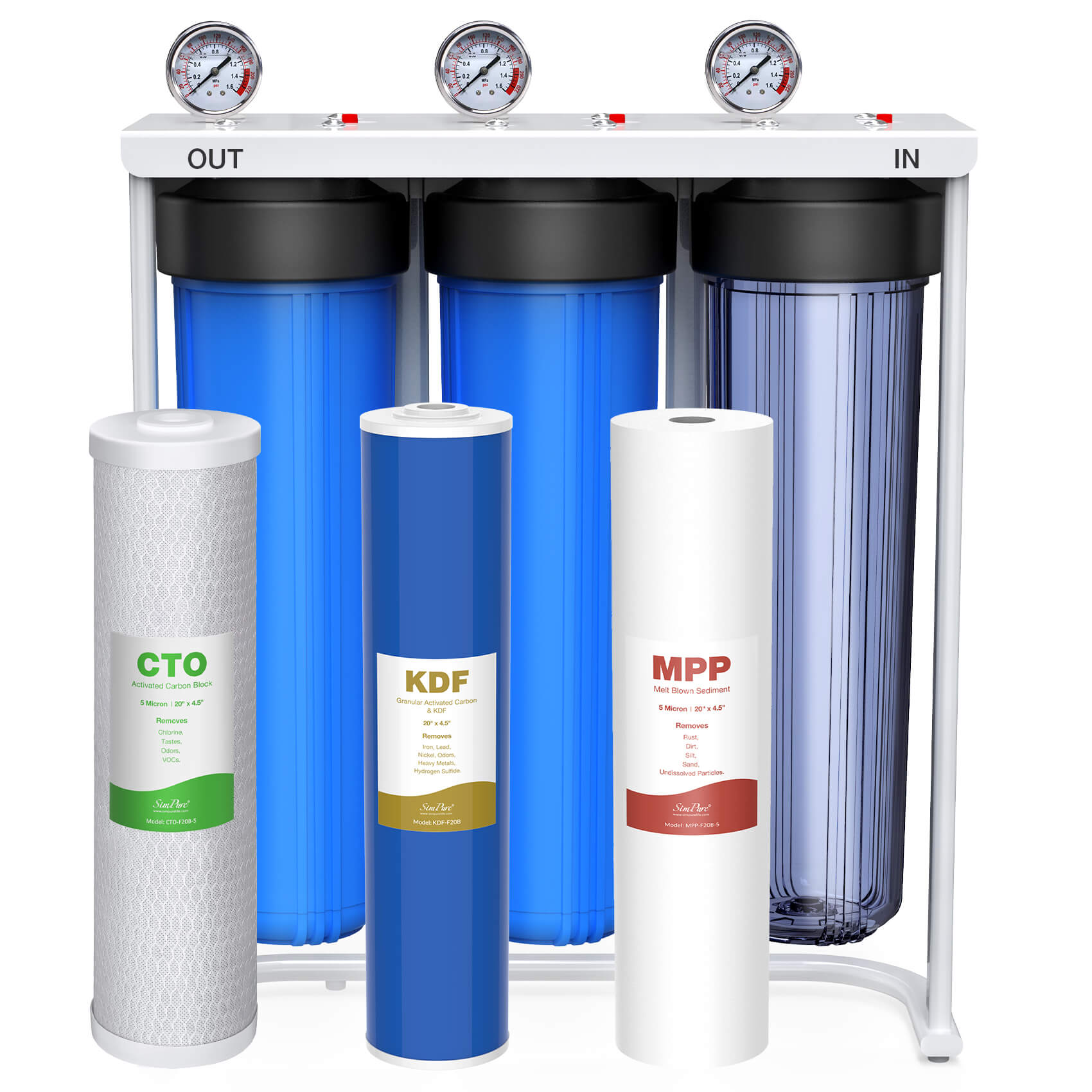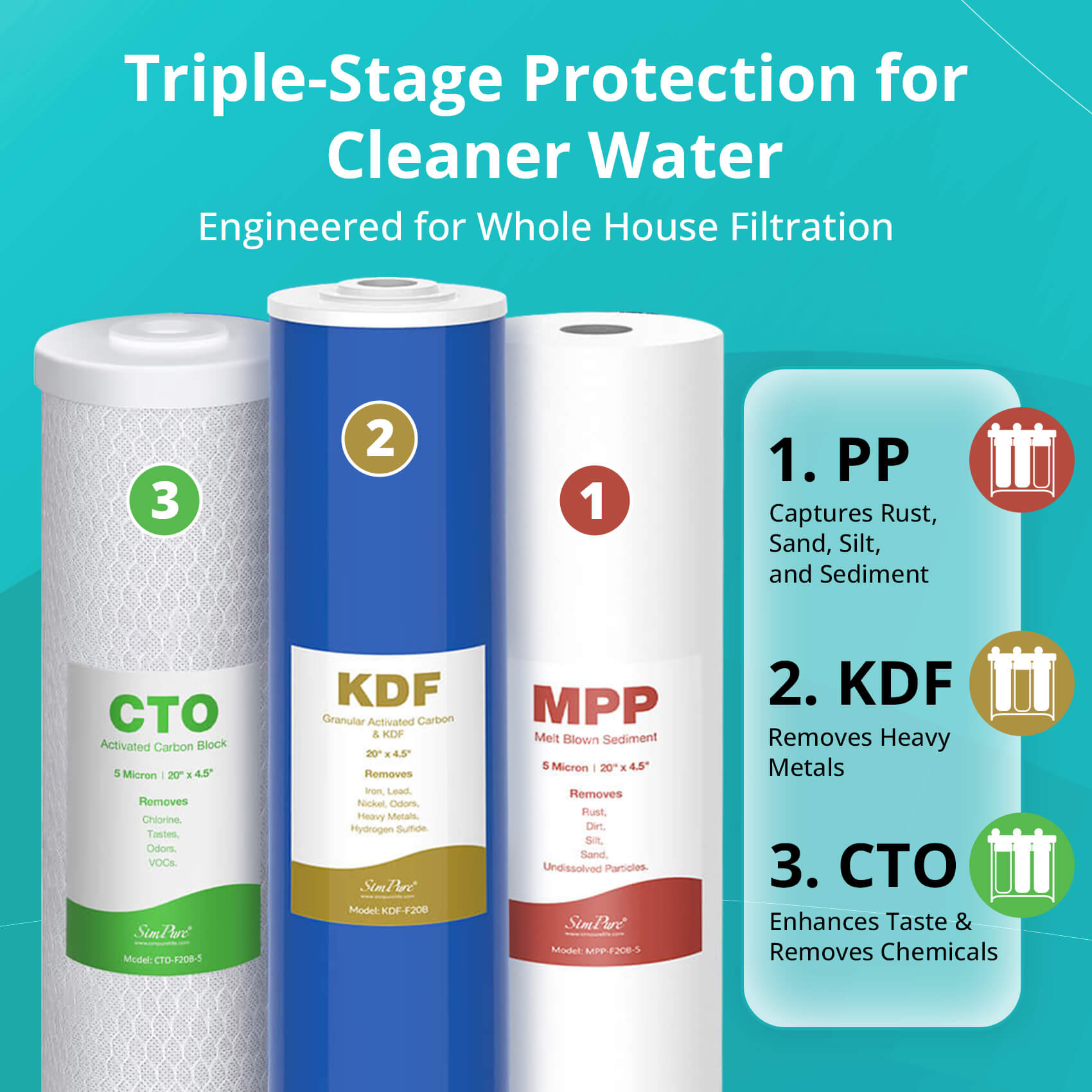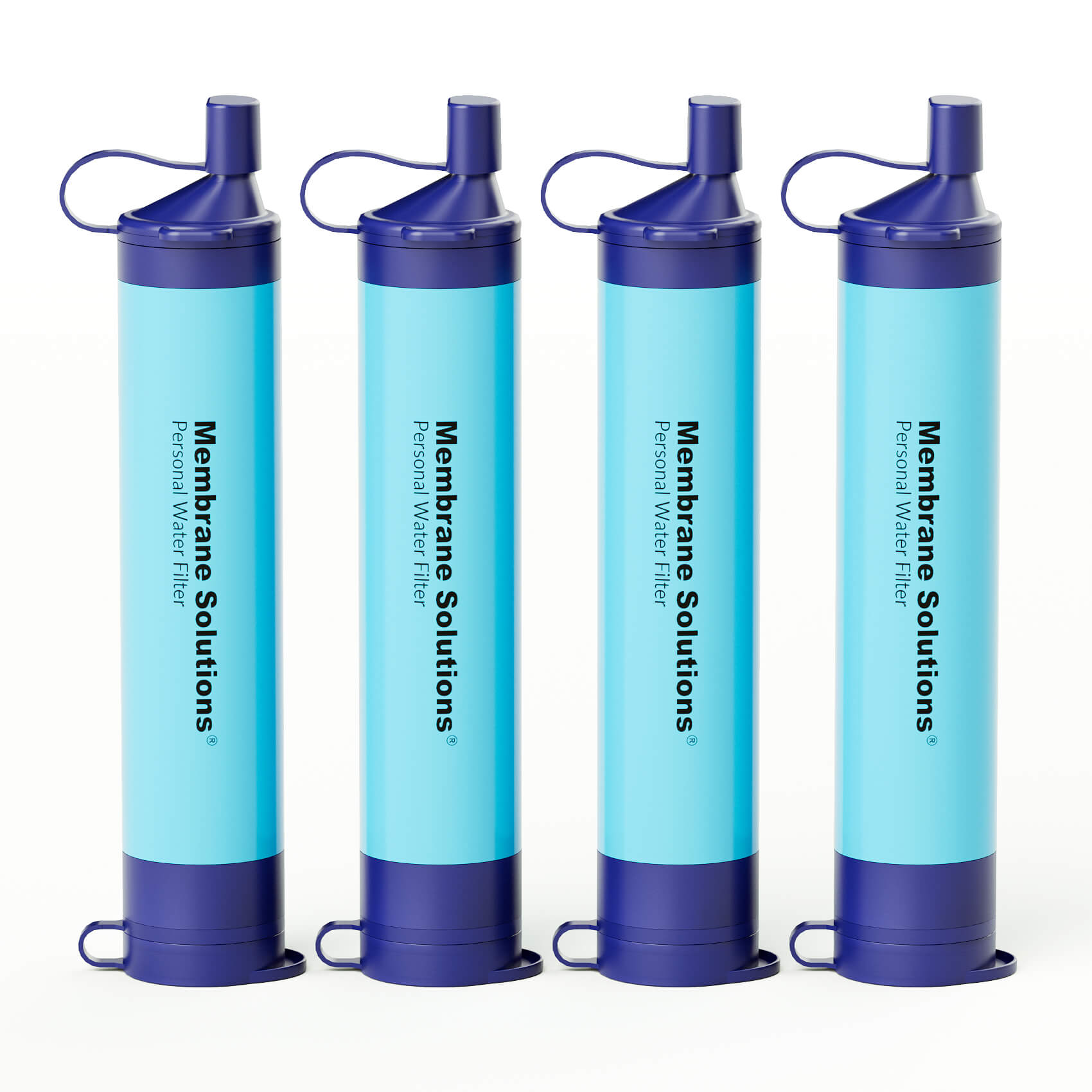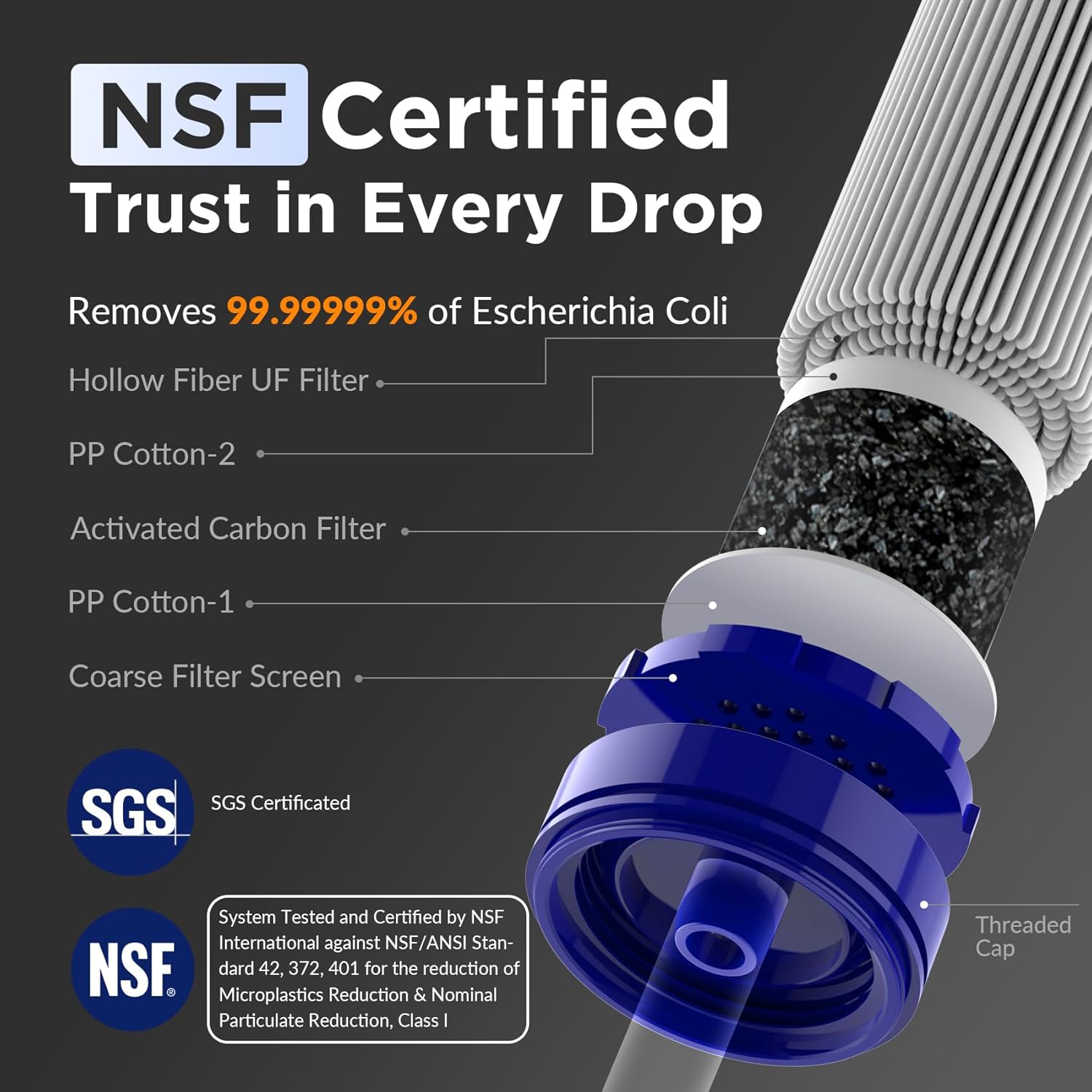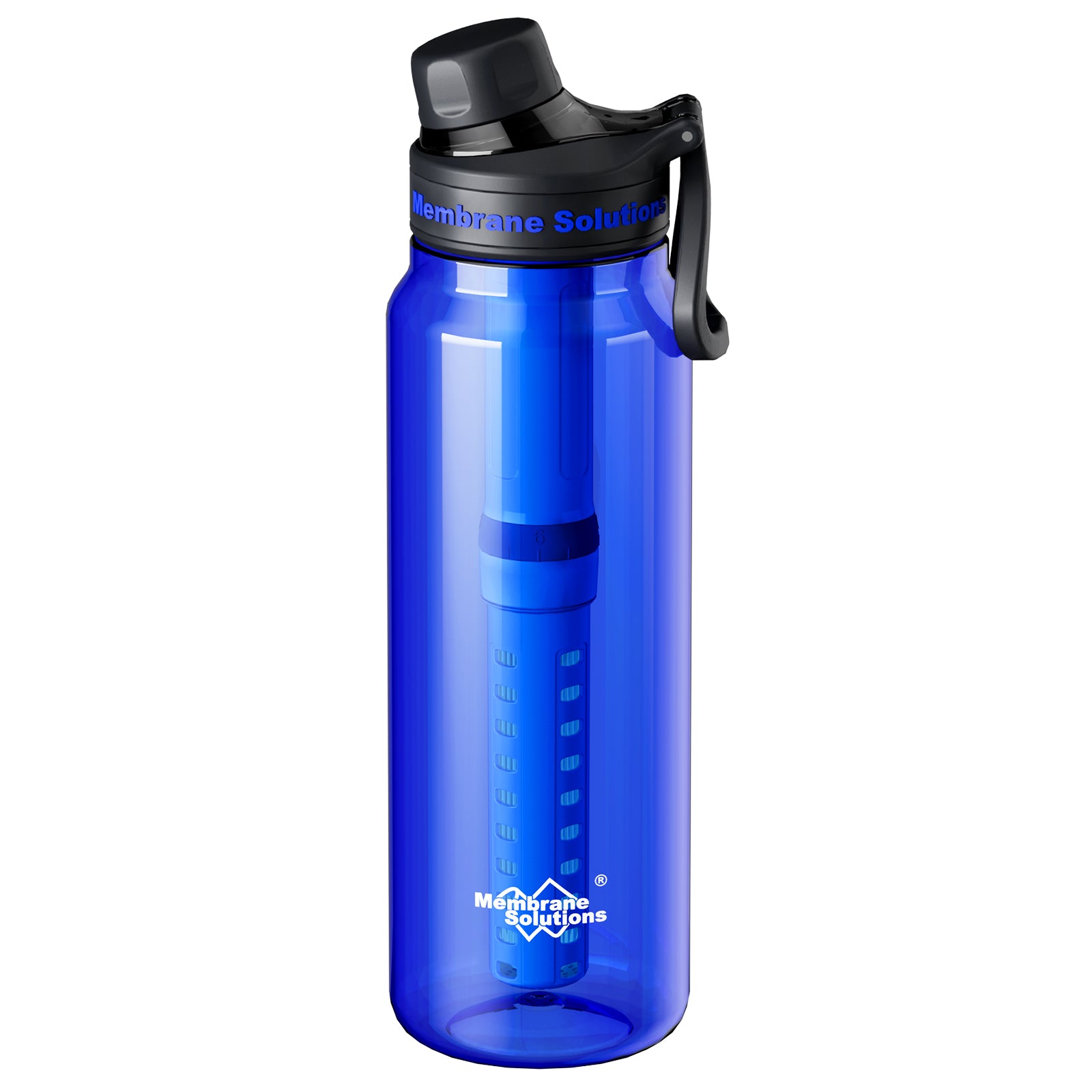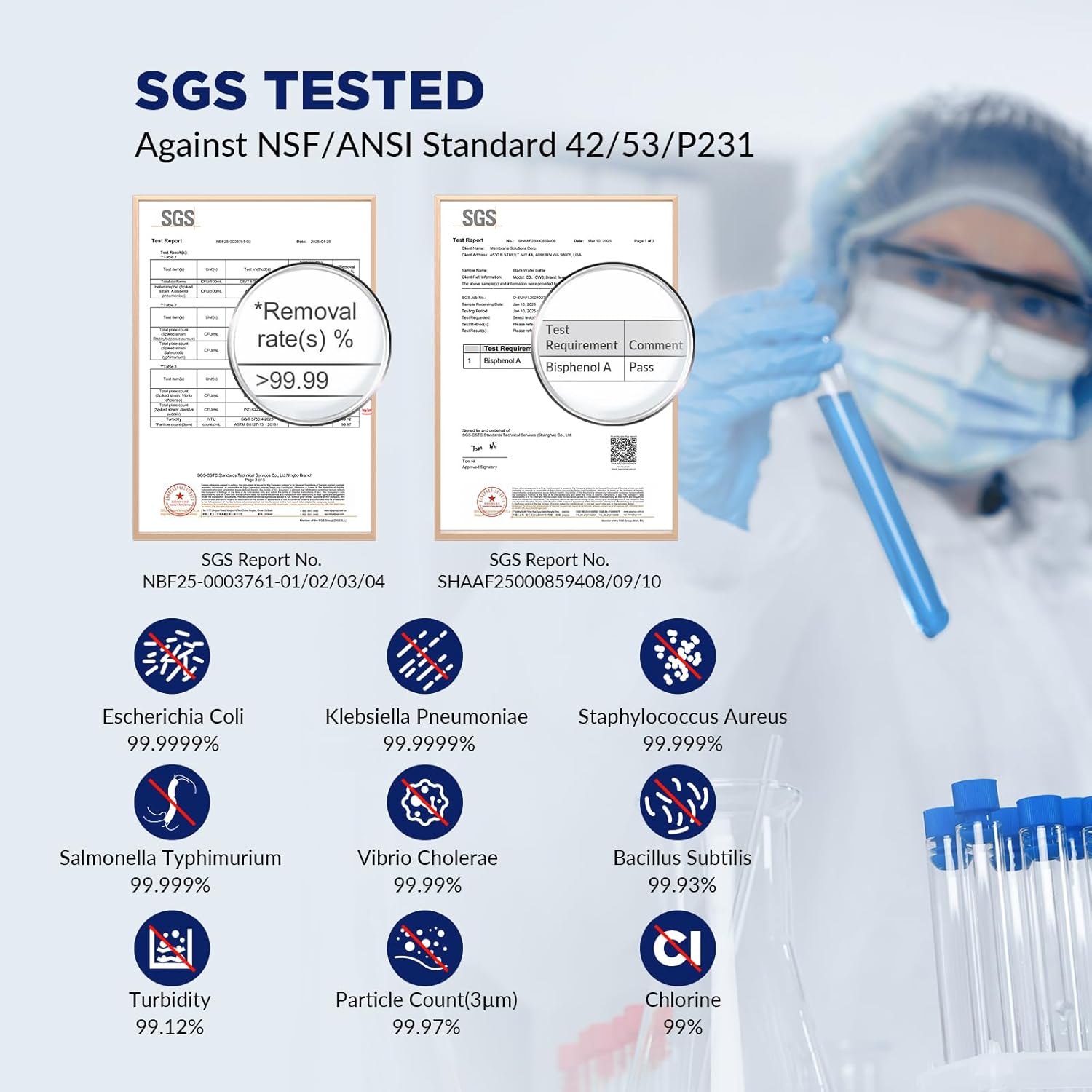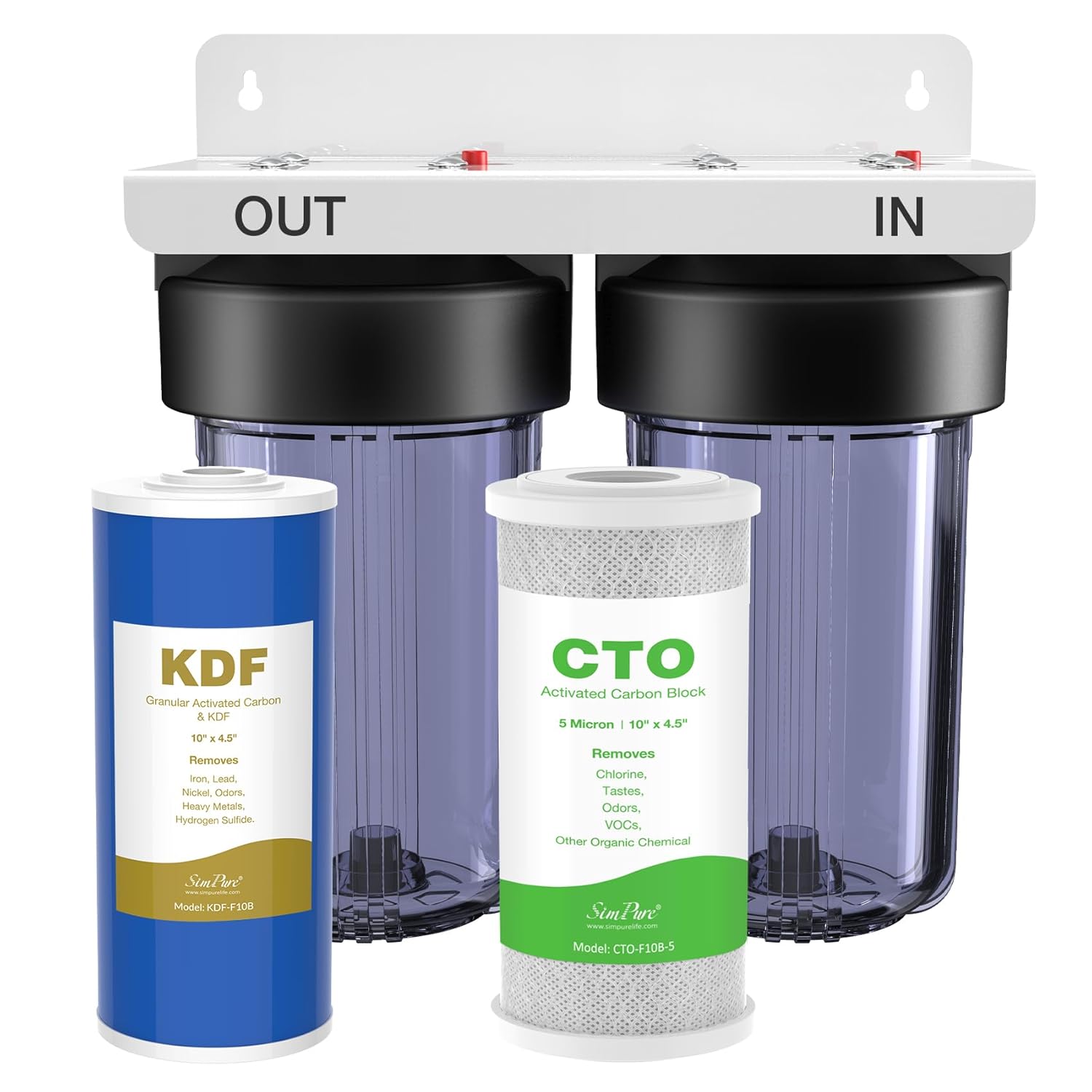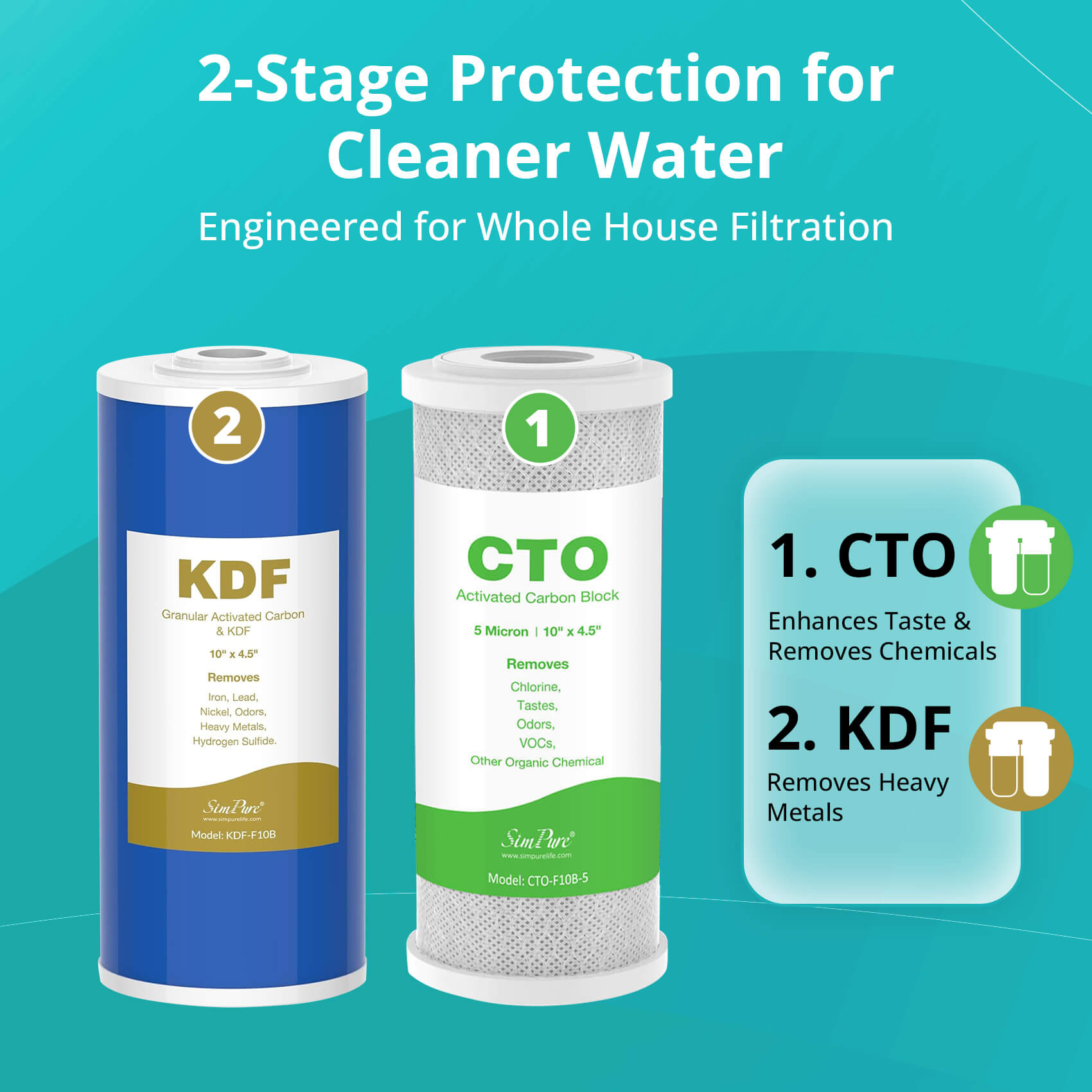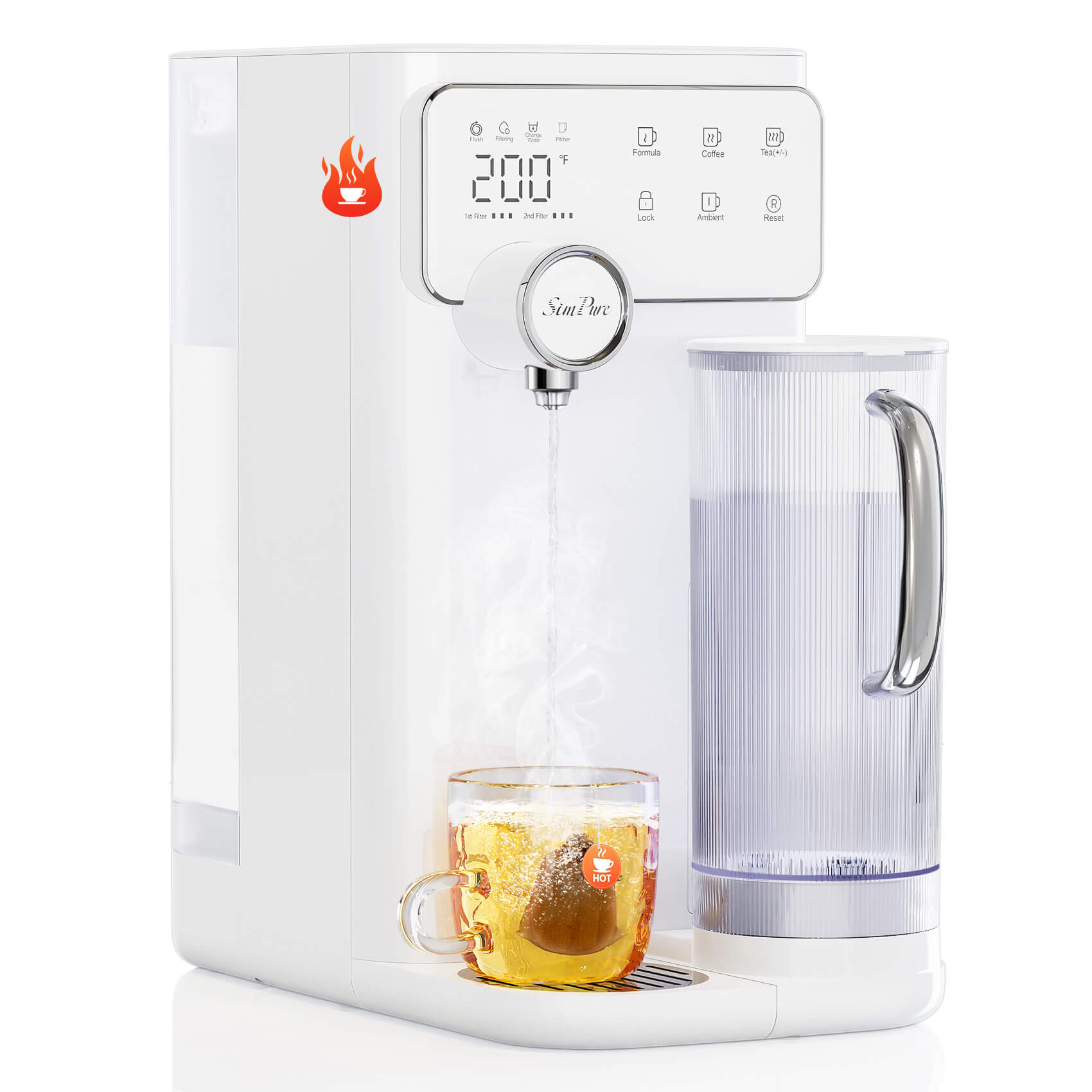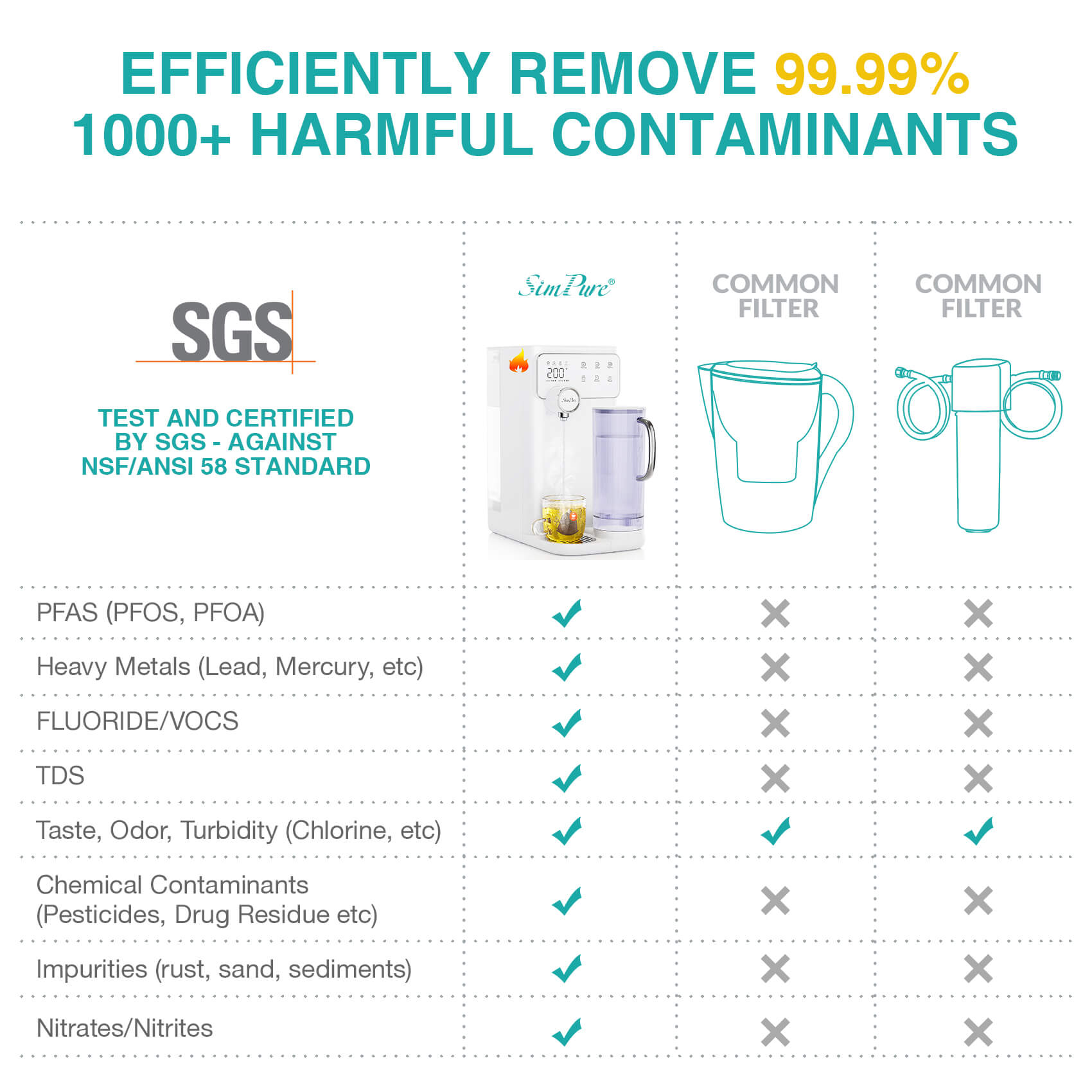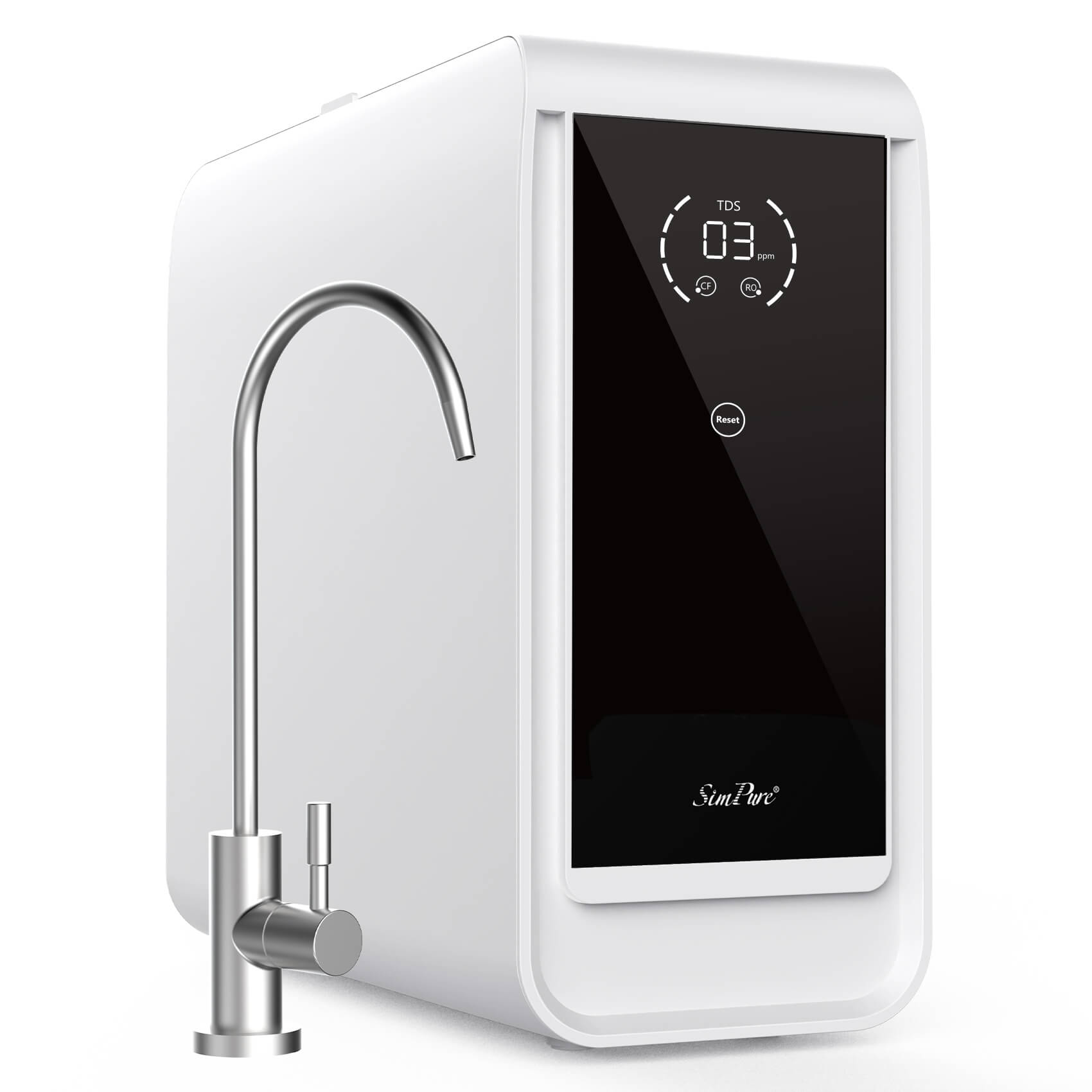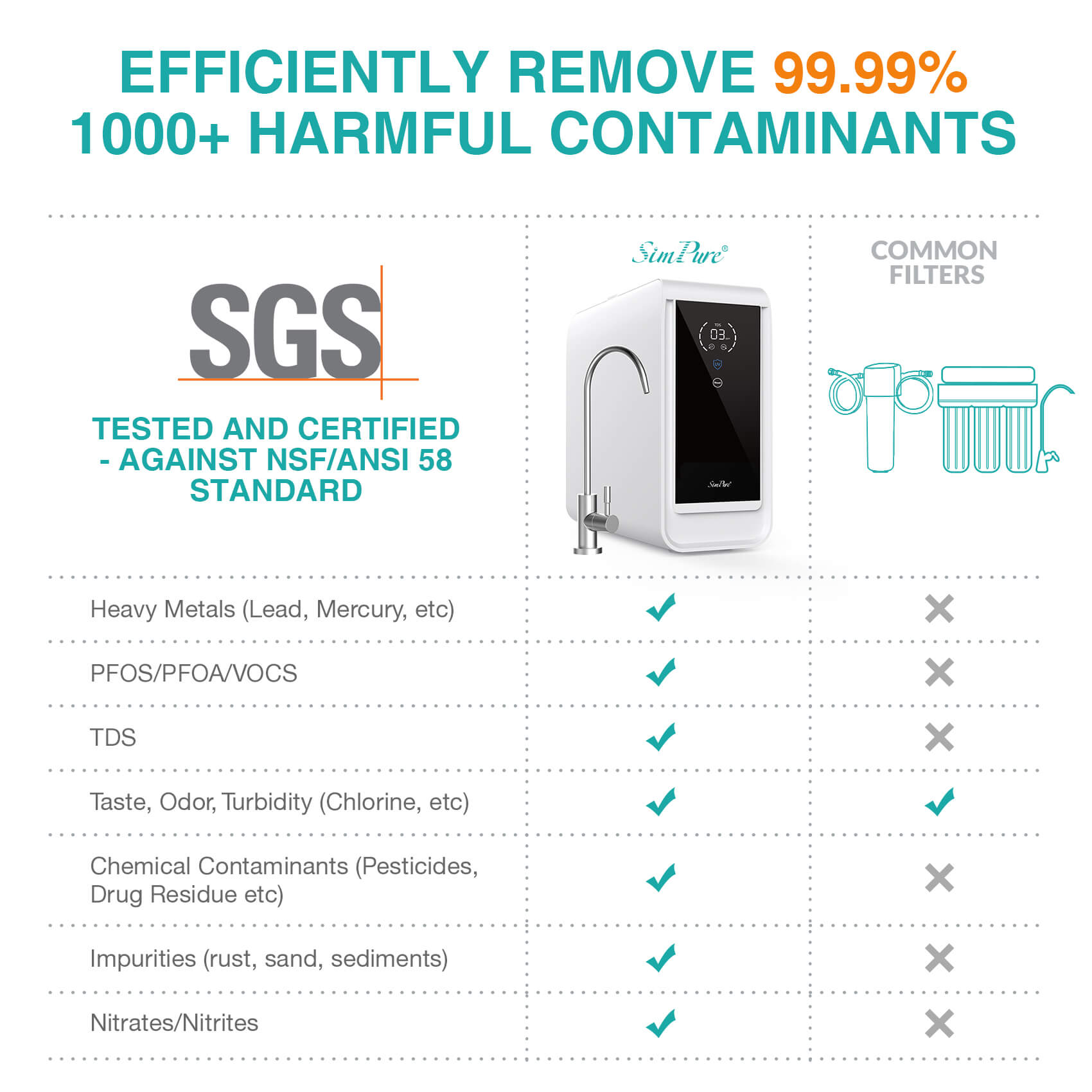Tap water, while generally considered safe to drink, often contains chlorine used for disinfection purposes. However, consuming water with high chlorine levels can lead to potential health and taste concerns. So, how to dechlorinate tap water or for fish tank? In our this blog, we'll explore the various ways to dechlorinate water for healthier consumption and better taste. We'll outline each method's process, advantages, and drawbacks, along with factors to consider when choosing the most appropriate approach for your needs.
Why Consider Dechlorinating Drinking Water?
Chlorine is added to water as a disinfectant to eliminate harmful pathogens like bacteria and viruses, ensuring its safety for public consumption. Since its introduction in the early 1900s, chlorine has played a critical role in reducing waterborne diseases and improving overall public health. Its low cost and high effectiveness make it a popular choice for water treatment facilities worldwide.
While chlorine is effective in disinfecting water, it can cause health and taste issues.That is why we are talking about how to dechlorinate tap water. Consuming water with high chlorine levels may lead to skin, eye, and respiratory irritation, as well as stomach discomfort. Moreover, chlorine imparts a distinct taste and odor to water, which can be unpleasant for many people. Thus, dechlorinating tap water can alleviate these concerns and enhance overall water quality.
6 Dechlorination Methods on How to Dechlorinate Tap Water
1. Boiling
Boiling is one of the simplest and most accessible methods for dechlorinating tap water. So, how long does it take tap water to dechlorinate? To use this method, heat the water to a rolling boil for at least 3 to 5 minutes. The boiling process causes the chlorine to evaporate, leaving the water dechlorinated. After boiling, allow the water to cool down before consumption or storage.
Pros:
- Inexpensive and requires no additional equipment
- Easy to perform and widely accessible
- Effectively removes chlorine and also kills many other pathogens
Cons:
- Time-consuming, especially for large volumes of water
- Energy-intensive due to the heating process
- Not suitable for removing other contaminants like heavy metals or volatile organic compounds (VOCs)
2. Aeration
How to dechlorinate tap water naturally? Aeration involves exposing water to air, allowing chlorine to evaporate naturally. This method can be performed by pouring water between two containers several times or using an air pump to circulate air through the water. Then how long does it take to dechlorinate water? For best results, allow the water to sit for at least 30 minutes before consumption or storage.
Pros:
- Inexpensive and requires minimal equipment
- Easy to perform
- Environmentally friendly, as it does not involve the use of chemicals
Cons:
- May not be as effective for large volumes of water
- Takes longer compared to other methods
- Does not remove other contaminants like heavy metals or VOCs
3. Activated Carbon Filtration
Activated carbon filters use a porous carbon material to adsorb chlorine and other contaminants from tap water. These filters can be installed in a variety of systems, such as pitcher filters, faucet-mounted filters, or whole-house filtration systems. Replace the filter cartridge as recommended by the manufacturer to maintain optimal performance. This a cheap method to solve the question how to dechlorinate tap water.
Pros:
- Effectively removes chlorine, taste, and odor
- Can also remove other contaminants, such as VOCs and heavy metals
- Convenient and easy to use
Cons:
- Can be more expensive compared to other methods
- Requires regular filter replacement and maintenance
- May not remove all pathogens, such as bacteria and viruses
4. Chemical Neutralization
Chemical neutralization involves adding specific chemicals, such as sodium thiosulfate or ascorbic acid, to tap water to neutralize chlorine. These chemicals react with chlorine to form harmless byproducts that can be safely consumed. Follow the manufacturer's guidelines for dosage and mixing instructions.
Pros:
- Highly effective in removing chlorine
- Can treat large volumes of water quickly
- Useful for emergency situations or when other methods are unavailable
Cons:
- Requires the use of chemicals, which may not be preferred by some individuals
- May not remove other contaminants or pathogens
- Proper dosage and mixing are crucial for effective dechlorination
5. Reverse Osmosis
How to dechlorinate water without chemicals?---RO. Reverse osmosis (RO) systems use a semi-permeable membrane to remove chlorine and other impurities from tap water. Water is forced through the membrane, which captures contaminants, leaving purified water on the other side. RO systems can be installed under the sink or as whole-house filtration systems.
Pros:
- Highly effective in removing chlorine and other contaminants, such as heavy metals and VOCs
- Provides excellent overall water quality
- Can remove certain pathogens, such as bacteria and viruses
Cons:
- Can be expensive to install and maintain
- Generates wastewater, which may not be ideal for water conservation
- May remove beneficial minerals, potentially altering the taste of the water
6. Ultraviolet (UV) Treatment
Ultraviolet treatment uses UV light to neutralize chlorine and other microorganisms in tap water. A UV lamp is installed in a water treatment system, and as water flows past the lamp, the UV light breaks down the molecular structure of chlorine and destroys pathogens. This method is often used in combination with other filtration methods. It is also a good solution to how to dechlorinate tap water.
Pros:
- Highly effective in neutralizing chlorine and destroying microorganisms
- Environmentally friendly, as it does not use chemicals
- Low maintenance, as UV lamps typically require replacement only once a year
Cons:
- Can be expensive to install and operate
- Does not remove other contaminants like heavy metals or VOCs
- Requires electricity to operate, which may not be suitable for off-grid situations
So Which Is the Best Methods to Remove Chlorine from Tap Water at Home?
Installing a reverse osmosis system is the best way for removing chlorine from tap water at home. Because it provides comprehensive purification, effectively removing not only chlorine but also heavy metals, VOCs, and certain pathogens. Installing a RO system is easy and convenient, ensuring high-quality water for your household. Superior performance and convenience make reverse osmosis system a top choice for improving tap water quality and safety, leaving you free of the annoying concern---how to dechlorinate tap water! Here's a comparison of the other ways, along with their best application places:
Boiling: Ideal for small volumes of water, boiling is a simple, low-cost method that also kills other pathogens. However, it is energy-intensive and not suitable for removing heavy metals or VOCs.
Aeration: Environmentally friendly and inexpensive, aeration is perfect for those who prefer chemical-free dechlorination. It may take longer and is not as effective for large water volumes or removing other contaminants.
Activated Carbon Filtration: Great for improving taste and removing various contaminants, these filters are convenient and easy to use. They require regular maintenance and may not remove all pathogens.
Chemical Neutralization: Highly effective and quick, this method is suitable for emergencies or when other methods are unavailable. It requires the use of chemicals, which may not be preferred by everyone.
Ultraviolet (UV) Treatment: Environmentally friendly and low maintenance, UV treatment is ideal for neutralizing chlorine and destroying microorganisms. It requires electricity and does not remove heavy metals or VOCs.
Tips for Maintaining Dechlorinated Water
Now that we've explored various dechlorination methods of how to dechlorinate water and determined that the RO system is the best choice for home use, let's dive into some essential tips for maintaining dechlorinated water and ensuring its quality.
Regular maintenance is essential for the optimal performance of your dechlorination method. For filtration systems, replace the filters according to the manufacturer's recommendations to ensure they continue to effectively remove chlorine and other contaminants. For UV treatment systems, replace the UV lamp annually or as advised by the manufacturer. Regularly clean and inspect your water storage containers to prevent bacterial growth and contamination.
Periodically test your dechlorinated water to ensure it meets the desired quality standards. Water testing kits are available for measuring chlorine levels, pH, and the presence of other contaminants. Regular testing helps you identify any issues with your dechlorination method and allows you to take corrective action to maintain safe, high-quality water for consumption.
In summary, the importance of dechlorinating tap water cannot be overstated, as it ensures both improved taste and reduced health risks. There are several methods to choose from, each with its own set of benefits and limitations. You may have chosen one for solving how to dechlorinate tap water. In addition, we particularly recommend the reverse osmosis (RO) system for its comprehensive water purification capabilities. RO systems not only eliminate chlorine but also remove heavy metals, VOCs, and certain pathogens, delivering clean, safe, and pleasant-tasting water. So take charge and make the transition to purified water today!


